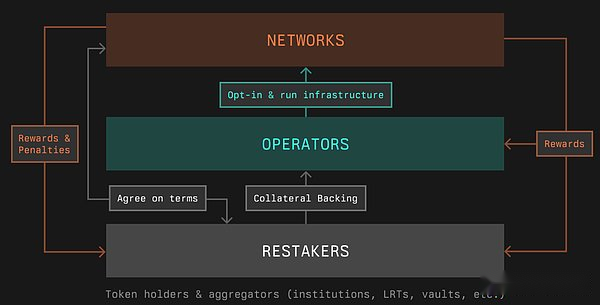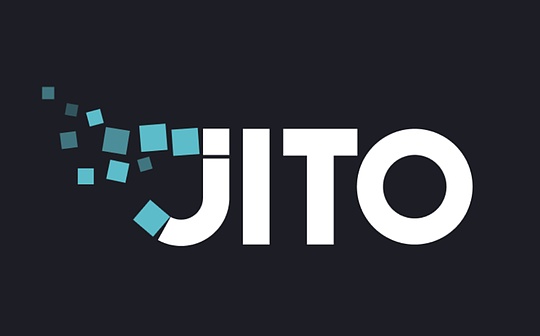
Author: Climber, Bitchain Vision
On July 4, the total lock-in value of the re-pled project Symbiotic (TVL) officially exceeded US$1 billion, and the project has been launched for less than a month.Previously, TVL reached US$200 million in just two days after Symbiotic was launched, and it has risen all the time since then, and its pledge pool has reached its upper limit many times.When it announced the increase of the cap on multiple re-staking pools, the project TVL soared 3 times that day.
Symbiotic is also a project that was favored by Paradigm and Lido, and it raised $5.8 million in seed rounds.As a new force in the re-private track, many industry insiders regard it as a competition for EigenLayer.
SymbioticIntroduction
Symbiotic is a shared security system.It is designed as an extremely flexible, permissionless and reliable lightweight coordination layer.It allows web developers to adjust and control their own (re)staking methods.Shared security refers to the fact that multiple networks can share the services and security guarantees of the same group of node operators, thereby improving capital efficiency and security.
Similar to EigenLayer, Symbiotic will provide a solution called Active Verification Service (AVS) for decentralized applications to jointly ensure security.Users are able to restake their assets stored in other encryption protocols to help protect these AVSs in exchange for rewards.
However, compared with EiegnLayer, Symbiotic allows users to “re-stake” Lido’s stETH and other popular assets that are natively incompatible with EigenLayer. It can be said that the range of tokens allowed to pledge users is wider, including ERC20 tokens and Ethereum verifiers.proof of liquidity, etc.
Additionally, Symbiotic provides more flexible component customization options.Although the core protocol is partly defined by immutable core contracts, other components, such as pledge assets, reward mechanisms and penalties standards, can be configured as needed by the network or other agents.
Developed by the team that previously created the Stakemind staking service, Symbiotic aims to become “a license-free restaking agreement that provides flexible mechanisms for decentralized networks to coordinate point operators and economic security providers.”

Symbiotic protocol features:
Multi-asset support: Symbiotic allows direct deposit of any ERC-20 tokens, including Lido’s stETH, cbETH, etc.This makes Symbiotic more diverse and efficient than Eigenlayer, which focuses primarily on ETH and its derivatives.
Modular design, customizable parameters: Symbiotic’s networks can choose their collateral assets, node operators, rewards and penalties, and all participants have the flexibility to opt in or out of shared security arrangements coordinated by Symbiotic.
Immutable Core Contracts: Symbiotic’s core contracts are not upgradeable (similar to Uniswap), which reduces governance risks and potential failure points and reduces execution-level risks.
Licenseless Design: By allowing any decentralized applications to be integrated without approval, Symbiotic provides a more open and decentralized ecosystem.
Core modules
The Symbiotic protocol consists of 5 interrelatedComponentscomposition:
1. Collateral
The security layer of Symbiotic.Collateral is an abstract concept used to represent underlying chain assets that have nothing to do with chains and assets.Collateral in Symbiotic can include ERC20 tokens, withdrawal vouchers for Ethereum validators, or other on-chain assets (such as LP positions), without being restricted by which blockchains the positions are held.
2. Vault (Vault, also known as operator pledge pool)
Symbiotic’s (re) pledge layer.Delegate collateral to cross-network operators by vaults that can be managed in a custom manner (e.g., by liquidity (re)solution providers, such as Lido or institutional holders) or by delegating to operator-specificVault.
3. Operator (also known as verifier, sorter, guardian, guardian…)
The operator in Symbiotic is defined as the entity that runs the network infrastructure.In proof of stake, successful staking providers have established a brand image and operated across networks.The Symbiotic protocol creates an operator registry and enables them to opt-in to the network and get financial support from restakers through vaults.
4. Analyzer (also known as the reduction committee, proof, dispute resolution framework…)
A parser is an entity or contract responsible for passing or vetoing penalties incurred by an operator on the network in which it provides services.They are agreed upon by vaults representing economic security providers and the networks they provide security for.
The parser can be fully automated (in the case of objectively proven reduction violations) or in the form of entities such as the reduction committee and external dispute resolution framework.The parser arbitrates penalties by providing (ideally neutral) third parties, enabling networks and remortlers to share collateral with each other.
5. Network (also known as application chain, summary, AVS, etc.)
The network in Symbiotic is defined as a protocol that requires a set of distributed node operators to provide trust minimization services, such as decentralized sorting of transactions, reaching consensus on off-chain data and bringing it onto the chain (oracle), automationSpecific protocol functions (Guardian), etc.
Decentralized infrastructure networks can leverage Symbiotic to obtain security in the form of operators and financial support.In some cases, the protocol may consist of multiple subnetworks with different infrastructure roles.The modular design of the Symbiotic protocol allows developers of such protocols to define participation rules in which participants need to opt into these subnets.
Symbiotic enables network builders to define, control and adjust their methods of onboarding, incentivizing and punishing operators and their principals (economic collateral providers).
Project News
Symbiotic was launched on June 11, and the deposit pool of stETH reached its upper limit on that day.Since then, Symbiotic has announced that the agreement staking pool has reached its upper limit.
On June 12, Symbiotic tweeted that the agreement reached the pledge limit of 41,290 wstETH in 5 hours.Nevertheless, users can still pledge other assets, and as the agreement initially expands, the pledge cap will gradually increase and more asset options will be added.Just one day later, Symbiotic stated here that all available re-pled assets of the project have reached the pledge limit.
On June 27, Symbiotics announced that USDe had reached its pledge cap and added USDe and ENA as new re-staking assets, but the USDe pool reached a $50 million quota hard cap 15 minutes after it was opened.
On July 3, Symbiotic, a replenishment agreement invested by Paradigm and Lido, has raised the deposit cap for multiple replenishment pools.This also allowed its TVL to take off directly and break through the $1 billion mark.
Currently, the Symbiotic ecosystem has nearly 20 partners, and the well-known projects are as follows:

On the day Symbiotic was launched, Lido DAO announced that it would cooperate with re-staking income platform Mellow Finance and re-staking agreement Symbiotic to launch the “Restaking Vaults”.
Subsequently, LayerZero Labs announced that Symbiotic will log in to LayerZero. Through Ethena Labs, Symbiotic will be integrated into the LayerZero DVN framework, enabling users to stake ENA to ensure cross-chain transfer of Ethena assets.Another staking giant ether.fi also announced the launch of liquidity re-staking tokens (LRT) weETHs based on Symbiotic.
In addition, Ethena Labs also announced that it will cooperate with Symbiotic and LayerZero to pilot the universal re-staking module.
summary
It was previously rumored that Symbiotic was brought to power because Paradigm’s previous investment in EigenLayer was rejected, and he turned to his competitors in anger.At the same time, the market speculates that the pledge leader Lido is cultivating new forces to deal with the dangers of EigenLayer.But no matter what, a competition and mutual inversion track can produce a quality project team better.








